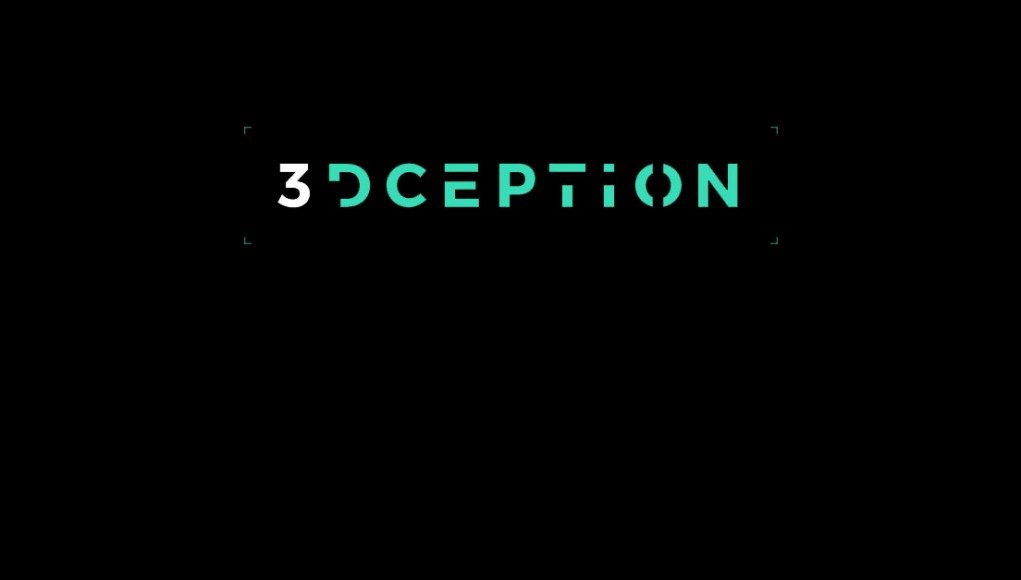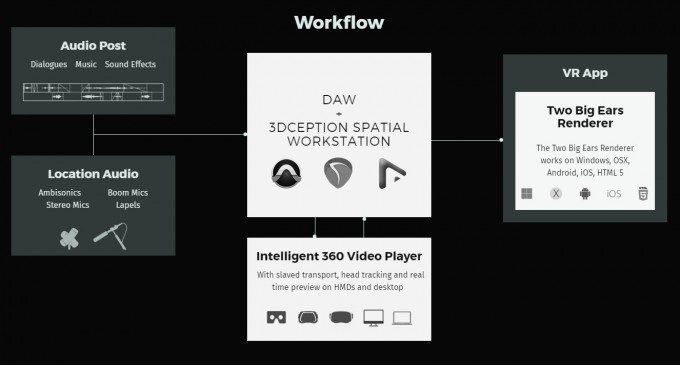3D spatial audio specialists Two Big Ears have launched a new ‘Spatial Workstation’, a platform for audio engineers to mix and edit immersive audio with realtime feedback leveraging VR headset head-tracking information.
Two Big Ears have been quietly building a name for themselves in the 3D audio space ever since they appeared on the scene with their 3DCeption audio API last year. The API is designed to provide an interface for developers to deliver accurate and compelling spatial audio, that is – audio which recreates a realistic sound-stage akin to the real world. This is particularly important for virtual reality as what you hear is a key trigger point for presence, the term used for psychological immersion in a virtual space.
See Also: Björk’s 360 VR Music Video “Stone Milker” Debuts Tomorrow, Powered by 3DCeption Audio
Rendering and delivering authentic, believable spatial audio is challenging enough, but right now audio specialists are working with traditional mixing tools, designed for mixing audio on a 2D, static plain (i.e. a monitor) with no way to tell immediately whether a mix works well when rendered in realtime when projected into a virtual space.
“With the rise of 360 video and Cinematic VR, there’s lots of work happening on the visual end and creating audio for such experiences is quite difficult with non-standard workflows,” says Varun Nair, Two Big Ear’s VP of Products. “Most of these experiences end up running with 2D sound simply because sound designers don’t have the right tools to get the job done. What is required is a good combination of game audio and the traditional post-production workflows.”
Enter the Spatial Workstation. Launching today, it provides a complete audio pipeline which TBE hope will provide the solution to the above problems. Spatial Workstation allows engineers to mix in their favourite applications (Pro Tools, Reaper, etc) whilst previewing the audio, rendered alongside the accompanying 360 video, obeying input from a VR headset. So, you can create the soundtrack to an immersive cinematic VR experience whilst all the while checking that the mix remains effective when cues move in realtime around the virtual sound-stage.
“We provide a whole set of tools for a sound designer to work with location sound, ambisonic recordings, sound effects and music and then re-position that audio in post-production,” says Nair, “Most of the audio you hear in a cinema or on television is re-created and positioned in post-production. Our tools help sound designers adapt and extend that workflow for VR.”
“First with Felix & Paul Studios and now with other visionary VR filmmakers since founding Headspace Studio, I have been pioneering 3D audio soundtracks for cinematic VR using an unorthodox combination of funky microphone prototypes, unapologetic plug-ins abuse and a pinch of bespoke code at render time,” says Jean-Pascal Beaudin, co-founder of Headspace Studio, “With their Spatial Workstation, Two Big Ears set out with the very ambitious goal of making this process of designing and delivering content for cinematic VR projects available to every audio post-production professional out there. After providing tons of feedback and testing their authoring tools for the past few months, it’s a bit of a pain to admit that they succeeded exceedingly well.”
Spatial Workstation is compiled for multiple platforms, so operating system should be no barrier, and TBE have eschewed portable code to ensure their rendering performance remains high, at least for now.
TBE’s primary concerns are removing barriers for engineers to work on immersive content “One of the main aims with this initial release was to cut down as many workflow and technology barriers as possible between content creation and delivery. The Spatial Workstation allows a sound designer to work within an environment they are familiar with (Digital Audio Workstations such as Pro Tools, Reaper, etc), and mix directly to 360 video or a VR device with head-tracking. We provide an advanced video playback solution that communicates with the audio workstation and also works as an alternative user interface.”
For those interested in this new-wave audio mixing and editing tool, you can register your interest at the Spatial Workstation mini-site here.
So, with the first version of Spatial Workstation in the public domain, what next for the Edinburgh based company? “We would be awfully short-sighted if we stopped at that! We are working on some very cool tech that combines interactive, linear audio, location analyses and lots of magic that we can’t talk about yet!”








